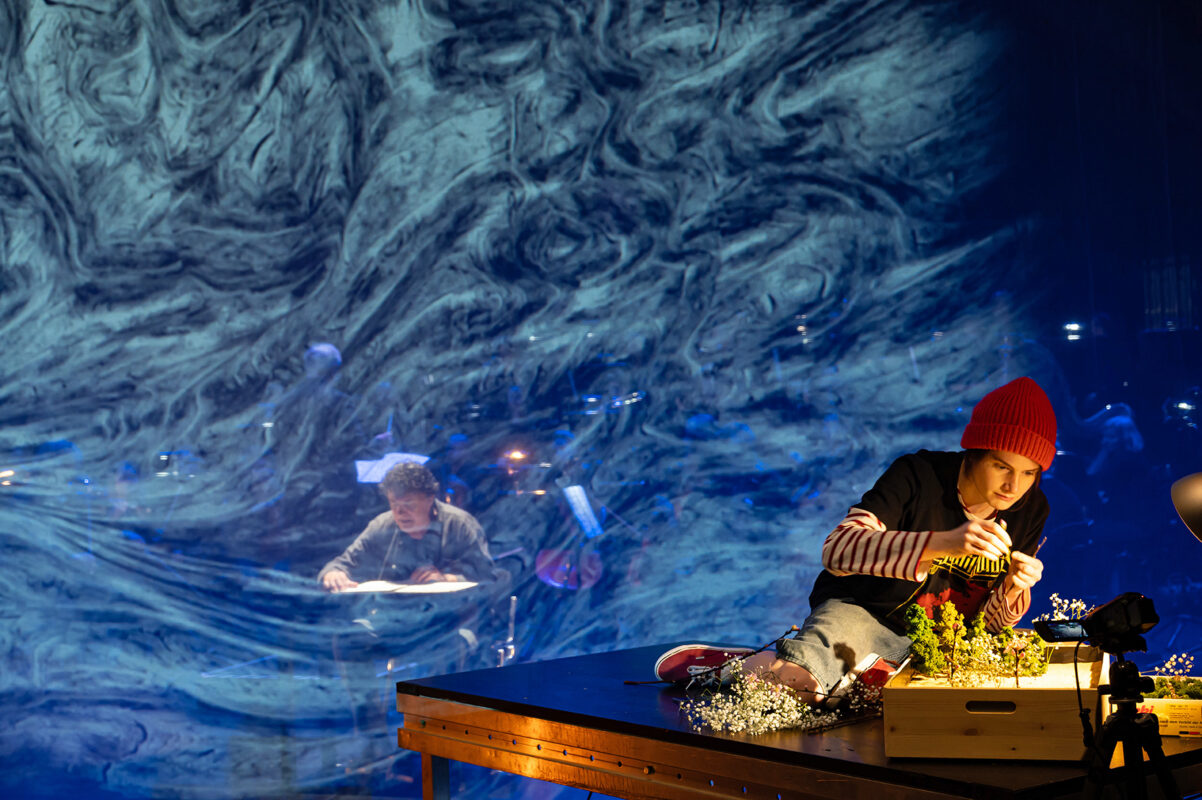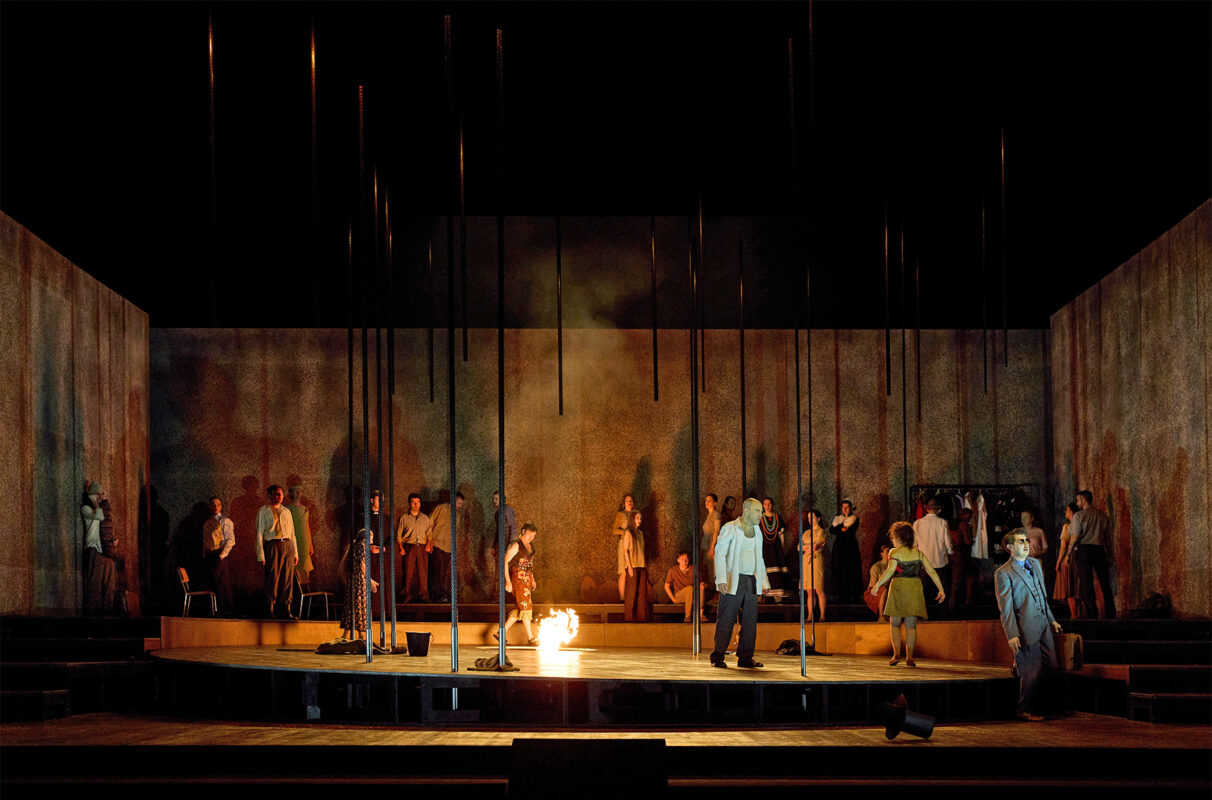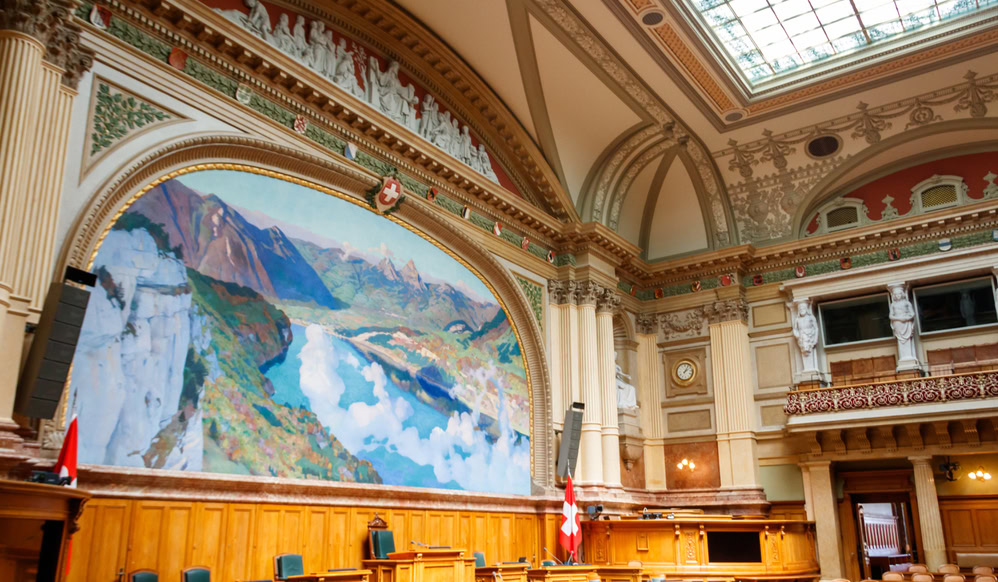Indoors and outdoors
The Wittener Tage für neue Kammermusik with an installation by Barblina Meierhans in the grounds and a composer portrait by Beat Furrer in the hall.

There used to be a lot to do in the Ruhr region. So much that German labor was no longer enough to satisfy the huge demand for coal and steel. Poles, Greeks, Turks - everyone helped with German reconstruction after 1945. Today, things are different in Bochum, Dortmund and Witten. Gone is coal and coal-making. Abandoned winding towers, collieries and mining tunnels are now destinations for excursions - including at the Witten Festival of New Chamber Music, which took visitors to the nearby Muttental valley for a sound hike with twelve stations in the form of installations, sound performances or full-blown concert pieces in the great outdoors.
Those who make installations usually refer to the location, either to its atmosphere or to its history. Franz Martin Olbrisch places a chirping canary at the entrance to a closed mine tunnel. For the miners, birds served as a kind of early warning system against "bad weather". If the dangerous methane gas escaped somewhere in the mine tunnel, the birds reacted first. If the gas was particularly strong, the bird was dead - and so it lies lifeless in another mine tunnel, which Olbrisch uses artistically.
Bursting stones
Barblina Meierhans, born in 1981 in Burgau, Switzerland, is currently studying with Olbrisch in Dresden; she previously studied composition with George Aperghis and Daniel Weissberg, among others, at the universities in Bern and Zurich. Meierhans calls her installation Steinsengen. She places small loudspeakers in the foundation walls of a demolished machine building, which emit the sound of bursting stones. You would think that stable stones would simply burst and bang violently. Meierhans, however, stages the splitting in a discreet, almost introverted manner. She attached contact microphones to stones, which she split with a hammer and wedges. The violent smashing blows can be heard in a tunnel entrance next to the foundation walls. Next to it, in the old machine building, the internal rock forces are expressed in the form of a strange clanking and squeaking from the loudspeakers covered with large iron plates.
Meierhans' sensitive installation invites you to linger. Unlike Olbrisch's work, it only unfolds its effect with time, which unfortunately is almost non-existent, as the sound hike moves too quickly to the next station. Beat Furrer is less familiar with such problems as an "indoor composer". Born in Schaffhausen in 1954, this year he is extensively present in the form of a composer portrait that reveals both chamber music and orchestral aspects in the concert hall. Furrer makes a thoroughly tired impression after two days of rehearsals (and interviews). But he is glad that, in contrast to other festival activities, he can show himself from different sides and not just with a world premiere.
-

- Photo: Andreas Oertzen
- Beat Furrer
Controlled explosion
Even the duet lotófagos I for soprano and double bass shows that Furrer can make something out of very unusual instrumentation. Contrary to expectations, the highs and lows nestle together. Furrer himself is surprised, he says, "how it mixes", adding that the advantage is that "you don't have any dynamic problems" and that the "harmonics of the double bass go very well with the soprano". Furrer is a sensitive sound explorer and instrumentalist. He talks a lot about "formants", "sound structures", "filter effects" and "movement models". The 1998 Track for piano and string quartet primarily brings the latter to the fore. A sparkling, circling figure in the piano gives the piece a good dose of propulsion. The strings of the outstanding KNM Berlin ensemble accentuate the action with plenty of pizzicati and harsh, penetrating strokes. In its motoric density Track far removed from both the intimate duets and the orchestral Two studiespremiered by the WDR Symphony Orchestra Cologne under the direction of Titus Engel.
There is no "Furrer system", nor is there a distinctive personal style. But in these Two studies but there are elements that emerge more frequently. Furrer is certainly not a radically exalted, raucous composer. In the first study, dissonant blocks of brass and low strings engage in a loud duel. However, control is too important to Furrer to leave the drama to fate. He always remains in control. There is no need for a canary warning of explosions here. The composer tames the energies himself - also with the help of the second study, which penetrates the subject matter, i.e. the music, in a broodingly deep yet highly skillful manner.








